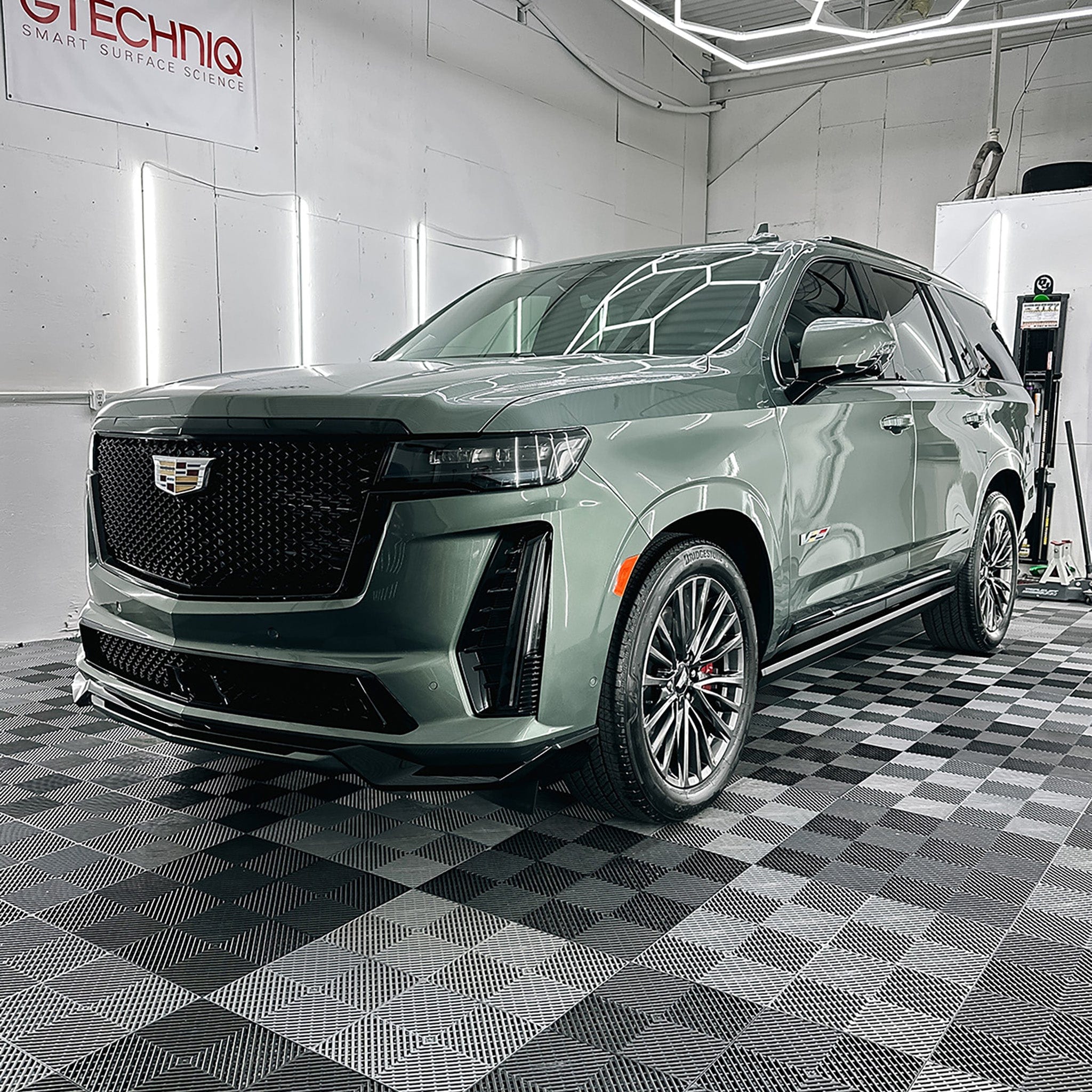Safeguard Your Vehicle Investment with Conforti Auto and Marine Detailing Ceramic Coating
Safeguard Your Vehicle Investment with Conforti Auto and Marine Detailing Ceramic Coating
Blog Article
Exactly How Outlining Ceramic Finishing Enhances the Long Life of Your Auto's Paint
Ceramic layer has actually become an essential innovation in auto describing, providing a long-lasting solution for preserving the stability of your automobile's paint. By creating a protective layer that effectively defends against UV rays, chemical stains, and ecological contaminants, this ingenious covering not only enhances the visual charm of the lorry however also adds to its general durability. Understanding the details of just how ceramic finish works and its benefits over traditional wax can give valuable understandings for auto proprietors. What variables should you consider prior to making the financial investment?
What Is Ceramic Finish?
Recognizing the protective advantages of ceramic finish begins with acknowledging its make-up and functionality. Ceramic covering is a fluid polymer applied to the external surfaces of automobiles, largely made to boost and safeguard automotive paint (Conforti Auto and Marine Detailing Ceramic Coating).
The covering's application includes thorough prep work of the lorry's surface area, which need to be without contaminants, scratches, and flaws to make sure optimum bond. Once used, the ceramic covering cures to create a stiff shield that can stand up to different ecological variables, consisting of UV rays, chemical stains, and oxidation.
Additionally, ceramic layers are not simply surface-level therapies; they pass through the paint to supply an enduring protection. This capability extends the life-span of the lorry's aesthetic appeals while preserving its worth with time. Comprehending these basic elements of ceramic layer is necessary for car proprietors seeking effective remedies for paint preservation and enhancement.
Benefits of Ceramic Finishing
The advantages of ceramic finishing prolong far past its fundamental protective features. Unlike conventional wax or sealers, ceramic coverings develop a solid bond with the auto's paint, allowing it to stand up to environmental dangers such as UV rays, acid rain, and road salt.
Furthermore, ceramic layers offer hydrophobic buildings, suggesting they repel water and impurities. This characteristic not only makes the lorry less complicated to tidy however additionally decreases the frequency of washing, saving both effort and time for automobile owners. The glossy surface developed by the finishing avoids dust and gunk from sticking, improving the cars and truck's general cleanliness.
In addition, ceramic coverings enhance the depth and quality of the paint, providing vehicles a glossy surface that is visually striking. This visual improvement additionally contributes to keeping the cars and truck's resale value, as a properly maintained exterior is a major marketing point for possible customers. On the whole, the advantages of ceramic coating make it a worthwhile financial investment for anyone aiming to safeguard and improve their lorry's paintwork.
Exactly How Ceramic Covering Works

The coating's hydrophobic properties fend off water and dust, stopping the build-up of crud externally. This not just makes the auto simpler to tidy but additionally reduces the possibility of scrapes and swirl marks brought on by typical cleaning techniques. Additionally, the ceramic layer serves as a guard versus UV rays, which can trigger fading and oxidation gradually.
When healed, the finishing exhibits impressive resistance to chemicals, consisting of roadway salts, bird droppings, and tree sap, which can or else damage the paint. The durability of ceramic layers can last for numerous years, relying on factors such as maintenance and ecological problems. On the whole, the chemical bonding process of ceramic finishings supplies a durable defense that keeps the integrity and appearance of a vehicle's paintwork.
Contrasting Ceramic Coating to Wax
Contrasting ceramic covering to conventional wax reveals significant differences in efficiency and long life. While both items aim to safeguard an automobile's paint, their structures and sturdiness set them apart. Wax, usually made from natural carnauba or artificial products, offers a short-term shield that usually lasts just a few weeks to a few months, relying on environmental conditions and upkeep routines.
In comparison, ceramic layers are sophisticated services made up of not natural materials that bond chemically with the car's paint. This creates a durable, semi-permanent layer of protection that can sustain for a number of years. Consequently, ceramic layers provide superior resistance to UV rays, chemical discolorations, and physical abrasion, considerably reducing the threat of oxidation and fading.
Additionally, the hydrophobic residential properties of ceramic finishes ensure that water grains up and rolls off the surface, making it extra challenging for dust and gunk to adhere. This convenience of cleaning is a noteworthy benefit over wax, which can attract dirt and call for regular reapplication. Inevitably, for cars and truck owners seeking durable security and enhanced aesthetic allure, ceramic coverings offer a more efficient choice to traditional wax products.
Maintenance Tips for Durability
Correct upkeep is essential for taking full advantage of the durability of a ceramic layer. Regular cleaning is the foundation of efficient upkeep. Use a pH-balanced auto shampoo to avoid breaking down the finish, and stay clear of automated car washes with harsh straight from the source brushes that can cause micro-scratches. Instead, select a touchless vehicle laundry or hand laundry.
To preserve the view website hydrophobic residential properties of the ceramic finishing, think about applying an upkeep spray or booster particularly developed for ceramic finishings every few months. This will enhance the protective layer and enhance water beading.
Additionally, stay clear of subjecting the coated surface area to severe environmental problems whenever possible. Auto parking in shaded locations or using a vehicle cover can protect against UV damage and contamination from bird droppings, tree sap, or industrial results.
Last but not least, examine the covering occasionally for indications of wear or damage. If you see a decline in hydrophobic habits, it may be time for an expert reapplication. By adhering to these upkeep tips, automobile owners can dramatically prolong the life and effectiveness of their ceramic coating, ensuring that their car's paint remains protected and aesthetically appealing for many years to come.
Conclusion

Report this page